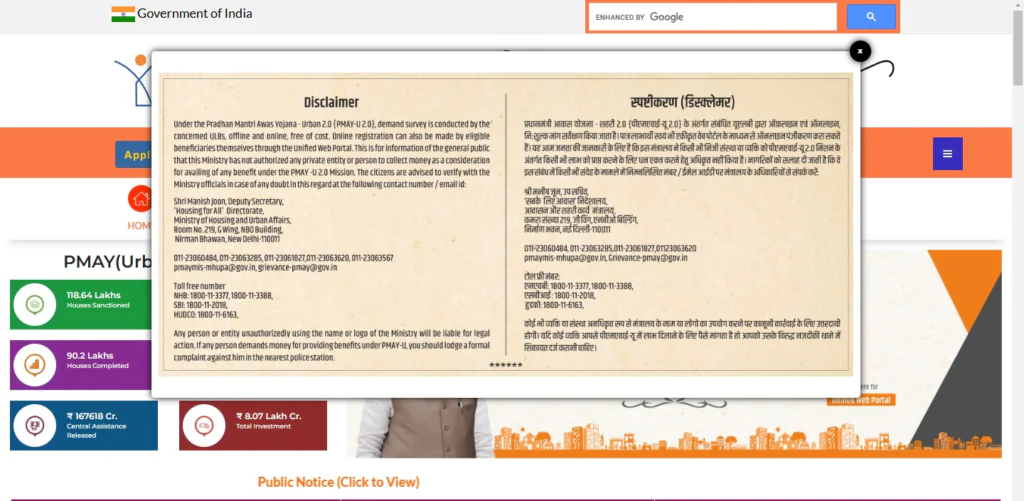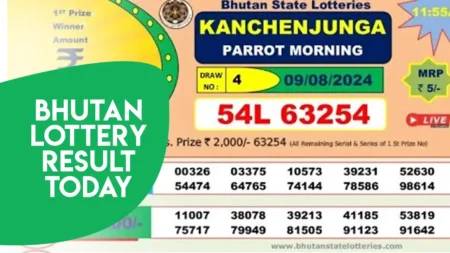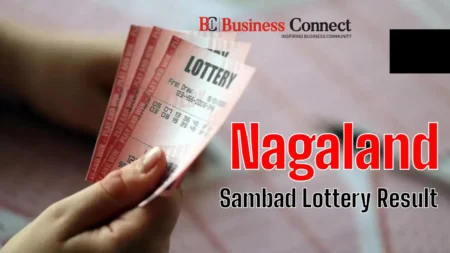Pradhan Mantri Awas Yojana (PMAY): Housing for All
Launched in 2015, the Pradhan Mantri Awas Yojana (PMAY) is a flagship initiative by the Government of India aimed at achieving “Housing for All”. This ambitious program addresses housing challenges faced by low- and middle-income groups, particularly in urban and rural areas, through affordable and sustainable housing solutions.
Key Components of PMAY:
- PMAY-Urban (PMAY-U): Focuses on addressing urban housing shortages through measures like affordable housing in partnership, slum rehabilitation, and credit-linked subsidies.
- PMAY-Gramin (PMAY-G): Targets rural households lacking proper housing, ensuring pucca (permanent) homes for rural families.
Core Benefits:
- Interest Subsidy: Offers reduced interest rates on housing loans through the Credit Linked Subsidy Scheme (CLSS).
- Targeted Assistance: Special focus on economically weaker sections (EWS), low-income groups (LIG), and middle-income groups (MIG).
- Women Empowerment: Mandates ownership or co-ownership of homes by women beneficiaries.
- Eco-Friendly Technologies: Promotes sustainable construction practices and modern technology.
Progress So Far:
Since its launch, PMAY has sanctioned and constructed millions of houses across India. The initiative not only addresses housing needs but also contributes to job creation and boosts economic growth.
Pmay Affordable Homes
The Pradhan Mantri Awas Yojana (PMAY) stands as a testament to India’s commitment to achieving “Housing for All” by 2022. Launched by the Government of India in 2015, PMAY aims to address the housing challenges faced by economically weaker sections (EWS), low-income groups (LIG), and middle-income groups (MIG) by providing affordable and sustainable housing solutions.
Objectives of PMAY
The primary goal of PMAY is to ensure that every Indian has access to a safe and affordable home. The scheme operates with the following key objectives:
- Affordable Housing: Facilitate the construction of affordable homes in urban and rural areas.
- Slum Rehabilitation: Upgrade and rehabilitate slum areas by providing better living conditions.
- Credit-Linked Subsidy Scheme (CLSS): Offer interest subsidies on housing loans for EWS, LIG, and MIG beneficiaries.
- Promotion of Sustainable Housing: Encourage the use of eco-friendly and sustainable construction technologies.
Key Features of PMAY
- Targeted Beneficiaries:
- Economically Weaker Sections (EWS) with an annual household income up to ₹3 lakh.
- Low-Income Groups (LIG) with an annual income between ₹3 lakh and ₹6 lakh.
- Middle-Income Groups (MIG-I and MIG-II) with annual incomes up to ₹12 lakh and ₹18 lakh, respectively.
- Urban and Rural Components:
- PMAY-Urban (PMAY-U): Focuses on urban areas where housing shortages are more pronounced due to rapid urbanization.
- PMAY-Gramin (PMAY-G): Targets rural households, aiming to reduce the housing gap in villages.
- Subsidized Interest Rates: Beneficiaries can avail of housing loans at subsidized interest rates under the CLSS, significantly reducing the financial burden of owning a home.
- Use of Modern Technology: To promote sustainability, PMAY encourages the adoption of modern and eco-friendly construction technologies, ensuring quality and durability.
Achievements and Impact
Since its inception, PMAY has made significant strides in addressing India’s housing crisis:
- Millions of homes have been sanctioned and constructed under the scheme, benefiting families across urban and rural areas.
- Slum rehabilitation projects have uplifted living standards for numerous households.
- The initiative has contributed to job creation in the construction and allied sectors, boosting economic growth.
- Women empowerment has been promoted by making female ownership or co-ownership of the property mandatory for eligibility.
Challenges and the Road Ahead
While PMAY has achieved remarkable success, challenges such as land acquisition, urban congestion, and ensuring timely project execution persist. However, with continued government support, private sector participation, and technological advancements, PMAY is poised to overcome these obstacles and fulfill its vision.
How to check and download NREGA job card list?
To check and download the NREGA (National Rural Employment Guarantee Act) job card list, you can follow these steps:
- Visit the Official Website: Go to the official NREGA website for your state or the central NREGA portal.
- Navigate to Job Card List: Look for a section or link specifically labeled “Job Card List” or similar. This is where you can find details about registered job cards.
- Select Your State and District: Typically, you will need to select your state, district, block, or panchayat to narrow down the search.
- Search or Download: Depending on the website, you may be able to search for specific job cards by entering details like village name, job card number, or applicant’s name. Alternatively, you might have the option to download the entire job card list for a particular area.
- Verify and Download: Once you find the relevant job card list, verify the details and proceed to download if required. The download format may vary, such as PDF or Excel.
- Contact Local Authorities: If you face difficulty finding the information online, consider contacting local NREGA authorities or the Panchayat office for assistance.
Each state might have its own NREGA website or portal, so ensure you are accessing the correct one for your location.
Conclusion
The Pradhan Mantri Awas Yojana is more than just a housing initiative; it is a mission to provide dignity, security, and a better quality of life to millions of Indians. By transforming housing dreams into reality, PMAY underscores the government’s commitment to inclusive growth and sustainable development, paving the way for a brighter future for every Indian citizen.










